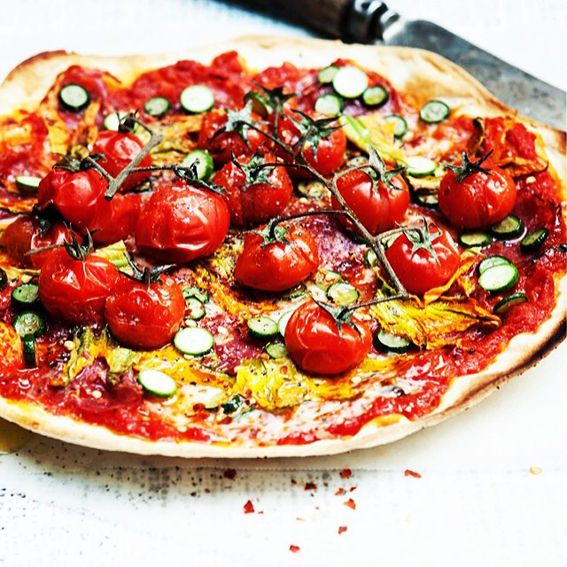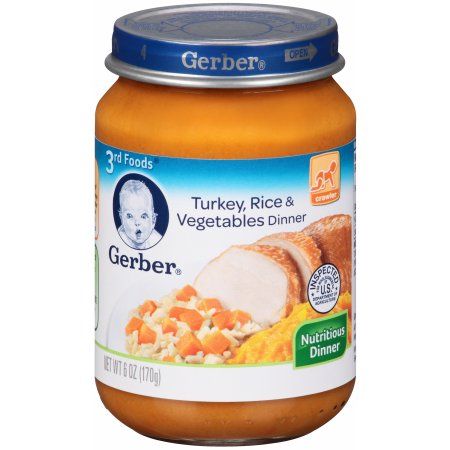How to clean mesh feeder for babies
Ultimate Guide to Baby Feeders: Mesh and Silicone
You may have seen baby feeders, whether mesh or silicone, and wondered what they are for. They are a great tool for feeding babies and toddlers—and are especially awesome for teething relief. There are many on the market though, so today I’m sharing the best of the best.
Baby Feeder
A baby feeder is made up of an easy-hold handle and a little pouch with lots of holes. The idea is that the holes allow some of the flavor and texture of the food to come out, without the concerns that may come with larger pieces of food.
This means you can worry less when it comes to choking risks.
One thing to keep in mind: They don’t allow babies to have the full texture experience of the food—since the texture is mostly the mesh of the feeder. That means you don’t want to use one of these for every meal (or even most meals).
Lots of exposures to lots of textures helps babies and toddlers gain confidence in handling all sorts of foods, which can make feeding kids a lot easier over the long run.
But an infant feeder can be a handy tool to have in the mix, especially if on the go, starting to transition to baby food, or trying out a new food that has you a little nervous.
And they are a great way to offer cold teething relief to soothe baby’s gums.
Baby Fruit Feeder
Many people like to use baby feeders to offer fruit, either fresh or frozen, since the product is a safe way for baby to suck on and explore the flavor of a wide range of fruit.
TIP: Another name for this is Baby Fruit Pacifier.
Best Baby Food Feeders
Below are my top picks for infant feeders chosen for ease of use, durability, and ease of care (as in washing!). There are different materials listed, as well as specific information on each product.
Best Mesh Feeder
Munchkin Baby Feeder, sold in a set of two. (Or choose the ones that come with travel caps.)
This baby feeder has a streamlined, simple design of a mesh bag for the food and a ring for baby to hold onto. Small, digestible pieces of food come through so baby is getting some nourishment (and comfort if using for teething) without the risk of choking. It’s about $7 for two of them.
Small, digestible pieces of food come through so baby is getting some nourishment (and comfort if using for teething) without the risk of choking. It’s about $7 for two of them.
Best Silicone Feeder
Boon Silicone Feeder
This baby feeder, which is priced at under $6, is made from durable silicone and can be used with fresh or frozen foods. The interior stem forces food toward the tiny holes in the feeder and the small handle is sized just right for baby’s little hands.
Kidsme Baby FeederBaby Feeder Pacifier Combo
Kidsme Food Feeder
This popular Kidsme feeder has a replaceable silicone pouch that comes in two sizes, so you can adjust and replace as your child grows. It has a unique handle style that some babies may prefer and can be used as a pacifier too. It’s usually priced around $15 and is recommended for ages 4-24 months.
What baby foods should I put into a baby feeder?
Here are some fruits that are good to serve in a baby feeder:
- Raspberries, fresh or frozen
- Strawberries, fresh or frozen
- Blackberries, fresh or frozen
- Cantaloupe
- Honeydew
- Banana
- Mango, fresh or frozen
- Roasted sweet potato
- Roasted butternut squash
- Ripe fresh pear
- Fresh cucumber, skin removed
- Watermelon
- Cooked red meat such as steak
- Frozen grapes (These are NOT safe served to a child this age in any other way as they are a choking risk.
 They are fine served inside the feeder, though.)
They are fine served inside the feeder, though.)
TIP: You can use frozen fruit or ripe fresh fruit that’s soft and easy to gum. Avoid any fruits or veggies that are very hard as baby may be frustrated by that texture.
Frequently Asked Questions
What age can baby use a mesh feeder?
Babies can use an infant feeder soon after starting solids around 6 months, or when they can easily hold it and bring it to their mouth.
How do I use a baby feeder to help with teething?
If you fill the feeder, whether mesh or silicone, with frozen fruit, you can soothe teething in infants who are eating solids or in toddlers. It’s cold and yummy, yet requires no real work for the child to suck on, so it’s comforting.
Are all of these baby feeders BPA-free?
Yes, if you choose a mesh baby feeder or one made from silicone, they are BPA-free.
What’s the best way to clean a baby feeder?
Try using a bottle brush or just running water to clean out the mesh. It should be fairly easy to clean if you avoid letting it sit too long with food in it!
Are baby feeders good for babies?
The one downside could be that if you rely on them too much, the child learns the texture of the feeder, rather than of the food. This can make it harder for a child to learn to move actual food around in their mouths and harder for them to accept a range of textures in the future when you don’t want to be using the mesh feeder as much.
Because of that, I recommend using this product at limited times such as when on the go at a restaurant or to help sooth a teething infant, baby, or toddler.
This is not recommended as a way to feed your child at every meal.
If you are worried about choking, review this information on toddler choking and trust that if you serve foods that are easy to squish between your fingers, baby is sitting down at meals, and you are with them, they will learn to eat like so many other kids who have gone before them!
You May Also Like
- Best Baby Puffs
- Favorite Sippy Cups
- Best Snack Containers
- Best Lunch Boxes
- Favorite Suction Bowls
- Top High Chairs
I’d love to hear your thoughts on baby feeders in general or on these specific products, so please comment below to share!
This post was first published May 2019.
Convenient & Easy to Clean
When you buy through our links, Insider may earn an affiliate commission. Learn more.
- Dr. Brown's Fresh First Silicone Feeder is an easy-to-clean alternative to the classic mesh feeder.
- Available in a two-pack for $10, the silicone feeder is a bit pricier than mesh feeders, but it's worth it for the convenience it offers.
- My 7-month-old daughter has tried a variety of fresh fruits using the feeder.
- Because you can toss the Fresh First Feeder in the freezer, it's a great teething remedy.
Thanks for signing up!
Access your favorite topics in a personalized feed while you're on the go.
I used mesh feeders to help introduce all four of my older children to solids, and they loved them. They were a safe, easy way to introduce my babies to new flavors, and I didn't have to worry about them choking.
They were a safe, easy way to introduce my babies to new flavors, and I didn't have to worry about them choking.
So, of course, when my fifth baby hit 6 months old and we began the process of introducing solids, I purchased the same mesh feeder I'd always used.
Unfortunately, I only got a couple uses out of it before it became caked with food that was impossible to clean out, even after multiple rounds of scrubbing and soaking. The biggest culprit? Bananas — I just couldn't seem to get those smushed bananas out of the mesh.
I resigned myself to prepared baby food, but wished I could still give my daughter the fresh food options that the feeder allowed.
But here's the thing: Times have changed since I first became a parent and innovative products like Dr. Brown's Fresh First Silicone Feeder now exist.
Dr. Brown's — maker of the best baby bottles we've tested — sent me their silicone feeder to test, and I was immediately impressed by how easy it is to clean. I've been using the feeder every day for three weeks, and my daughter loves it, especially when it's filled with bananas.
I've been using the feeder every day for three weeks, and my daughter loves it, especially when it's filled with bananas.
Dr. Brown's silicone feeder is designed like a bottle top and with a plastic handle for babies to hold
Made for babies 4 months and older, the smartly designed Fresh First Feeder resembles a nipple top on a bottle. To use it, fasten the silicone nipple portion through the base, then add food into the top, and screw the top onto the base, just like a bottle. With a cover that fits on top, it can also be taken on-the-go.
The feeder has a wide BPA-free plastic handle on the bottom, which has been perfect for my daughter to grip on her own, even though she still has a bit of a shaky grasp at 7 months old.
I'm a big proponent of baby-led weaning and love the fact that I can safely introduce my daughter to a variety of fresh foods and flavors with the Fresh First Feeder. It doesn't necessarily provide nutrition for your baby, as the holes are small and babies can't get a lot of sustenance from it. Rather, it's meant to introduce them to new foods and flavors. So far, my daughter has been able to try lots of fresh foods, from apples and frozen peaches from our orchard to strawberries and avocado.
Rather, it's meant to introduce them to new foods and flavors. So far, my daughter has been able to try lots of fresh foods, from apples and frozen peaches from our orchard to strawberries and avocado.
It's easy to clean and doubles as a teether
The feeder is made of three parts that are dishwasher safe. Chaunie BrusieBy far, my favorite feature of the feeder is how easy it is to clean. Just unscrew the top from the base, remove the silicone nipple, and hand-wash it, or toss all the pieces on the top rack of the dishwasher. It's also safe to sterilize in a microwave or electric sterilizer or in boiling water. Compared to the multiple rounds of soaking and scrubbing required with mesh feeders, cleaning the silicone feeder is a breeze.
Compared to the multiple rounds of soaking and scrubbing required with mesh feeders, cleaning the silicone feeder is a breeze.
The feeder also does double duty as a teether. The entire thing can be popped into the freezer to make a super convenient and tasty teether to soothe your baby's gums.
The only con is that your baby might have to work at it
Because it is made of silicone, the feeder is a little bit tougher for my baby to chew on and get out those tasty juices as compared to mesh feeders. I've found that I need to squeeze whatever food is in the feeder to release the juices before giving it to her. Once she gets a taste of it, she is encouraged to suck on it on her own, and then there's no stopping her.
The bottom line
Dr. Brown's Fresh First Silicone Feeder is an excellent fresh food feeder. It allows me to introduce fruits to my baby with the same safety assurance of a mesh feeder but without the cleaning troubles. Plus, it's been great for soothing her swollen gums as she's teething.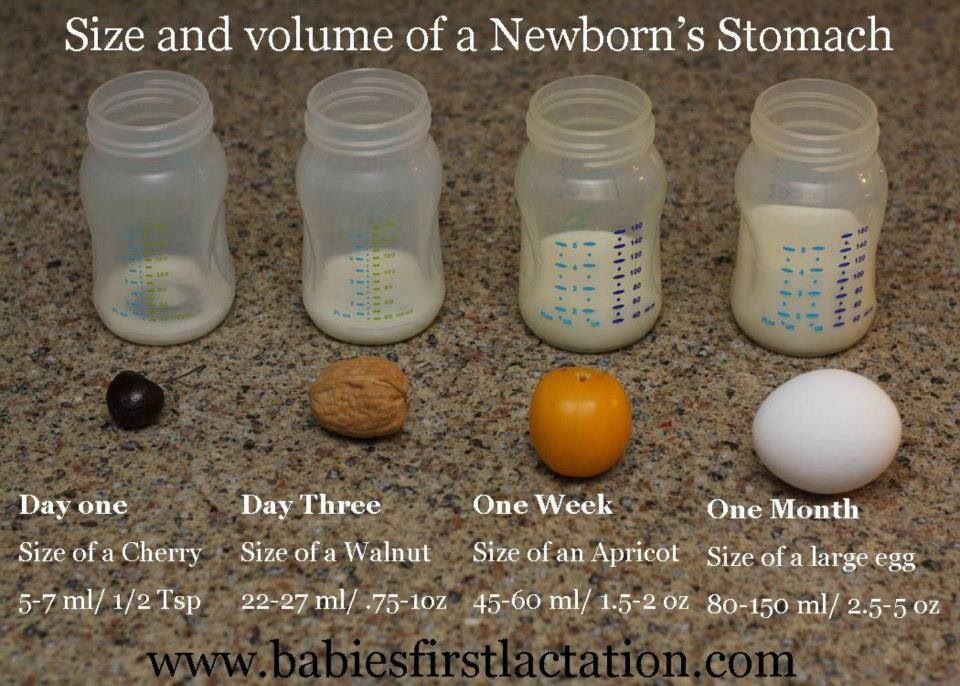
Chaunie Brusie
Chaunie Brusie is a contributor to Insider.
Read moreRead less
Subscribe to our newsletter.
You can purchase syndication rights to this story here.
Disclosure: This post is brought to you by the Insider Reviews team. We highlight products and services you might find interesting. If you buy them, we get a small share of the revenue from the sale from our commerce partners. We frequently receive products free of charge from manufacturers to test. This does not drive our decision as to whether or not a product is featured or recommended. We operate independently from our advertising sales team.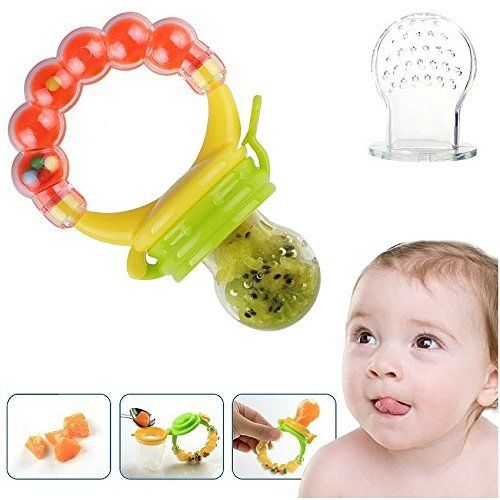 We welcome your feedback. Email us at [email protected].
We welcome your feedback. Email us at [email protected].
how to make a feeder for birds and how to feed birds in winter
On winter feeders you can often observe funny quarrels - a small but brave tap dance drives away a great tit from valuable food. Photo: Anna Lukyanchikova
Winter is a difficult time for birds. With the onset of the cold season and snowfall, birds lose access to the seeds of wild plants. In search of food, sparrows, woodpeckers, greenfinches, bullfinches, tits and titmouse move closer to human habitation. Often in the diet of wintering birds, foods that are unsuitable for them appear - spoiled fruits from landfills, salted lard and moldy white bread. Proper feeding of birds not only helps birds survive the cold, but also stay healthy. Organize a bird canteen with your child so that you can watch birds all winter without leaving the city. nine0003
Ruddy bullfinches rarely look at the feeders, and they are always interesting to watch.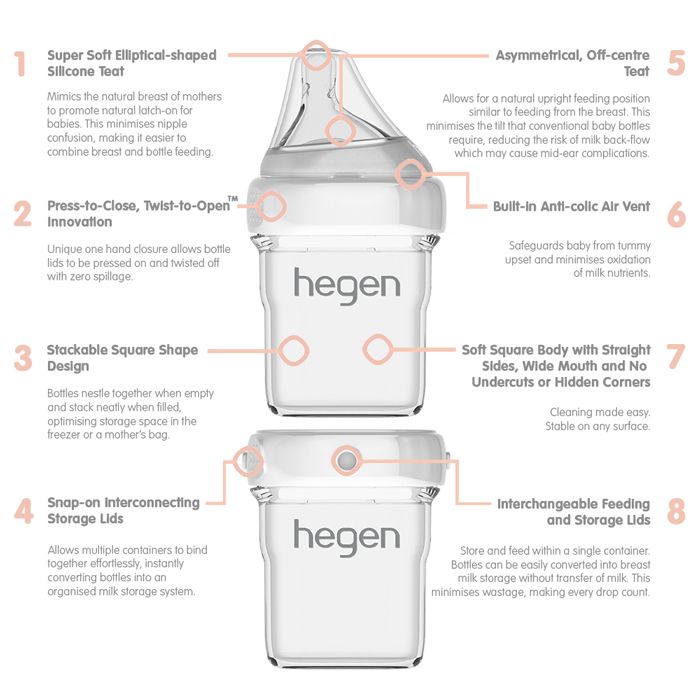 They love unsalted lard and seeds. By the way, only males have a bright red breast. Photo: Anna Lukyanchikova
They love unsalted lard and seeds. By the way, only males have a bright red breast. Photo: Anna Lukyanchikova
Is it necessary to feed the birds in winter?
Birds that do not fly away to warmer climes with the onset of cold weather are called wintering birds. These are sparrows, pigeons, crows and jackdaws familiar to the townspeople - city birds that are used to feeding near humans. Forest birds are more cautious, but they also move to cities with the onset of cold weather, and then return to forest parks and green areas. In winter, at the feeder you can meet bullfinches and tits, nuthatches, pikas, greenfinches, tap dances, woodpeckers, blue tit and other species. Wintering birds are adapted to the cold, but whether they can survive the winter and in what quantity depends on the person. Do-it-yourself bird feeders help to survive not only strong, but also young, weakened birds. nine0003
Moskovka is a small tit, which is rarely seen in the city and is listed in the Red Book. But even she is not averse to eating sunflower seeds on a hemp in winter. By the way, these stumps can be used as natural canteens for birds if there are no ordinary feeders nearby. Photo: Anna Lukyanchikova
But even she is not averse to eating sunflower seeds on a hemp in winter. By the way, these stumps can be used as natural canteens for birds if there are no ordinary feeders nearby. Photo: Anna Lukyanchikova
What are bird feeders made of?
If you want to buy a ready-made bird feeder or make it yourself, you should pay attention to the fact that the bird canteen must meet some requirements: nine0017 Safe The feeder is designed to help the birds - so you should take care that it does not have sharp edges or narrow holes where the pichuga can get stuck. If you are making a plastic feeder, glue or melt the edges, or even better, use wood. It is better to refuse metal - the legs of feathered neighbors can freeze. Eco friendly You can make a feeder out of a plastic bottle or a milk carton, but these canteens tend to get soggy or clog up quickly. The plastic needs to be cleaned periodically and the edges made safe right away, and tetra-pak feeders will need to be changed every 2-3 weeks. A wooden feeder or any other reusable alternative would be a great option. nine0003
A wooden feeder or any other reusable alternative would be a great option. nine0003
The feeder in the photo is a masterpiece of carpentry, but it is not difficult to repeat it in a simplified version. Materials are easy to pick up at a hardware store or use the remnants of your building materials. It remains only to connect all the parts and treat them with a wood preservative that is harmless to birds. Photo: klimkin, Pixabay
Easy care The feeder should be cleaned regularly to keep the food from spoiling and bacteria from accumulating in it. If the bottom is wide and access to it is open, you can easily remove the remnants of food and fill in a new one, and after the end of the feeding season, thoroughly wash the feeder. nine0017 Refillable Birds perfectly remember feeding places and fly there every day to dine. It is better to fill the feeder constantly so that the birds do not waste their energy, but even if your feeder is sometimes empty, it's okay. After all, birds have a whole map of places in their heads where they can eat. It is best that the food in the feeder is in the evening so that the birds can eat before the cold night. And if you don't always manage to put down the feed, you can team up with neighbors and friends who will also fill the feeder. nine0003
After all, birds have a whole map of places in their heads where they can eat. It is best that the food in the feeder is in the evening so that the birds can eat before the cold night. And if you don't always manage to put down the feed, you can team up with neighbors and friends who will also fill the feeder. nine0003
Greenfinch, like other wintering birds, enjoys shelling sunflower seeds in a wooden feeder. Photo: Anna Lukyanchikova
Well-designed At the bottom of the feeder, you need to provide bumpers so that the food does not spill out, and close the building with a roof on top - this way you will not only extend the shelf life of the food inside, but also hide the pichug from predators like hawks. Bird friendly It is not very comfortable for birds to feed in an open place - dangers await them everywhere. It is best to place the bird's dining room near the bushes or among the trees - so the birds will be more comfortable.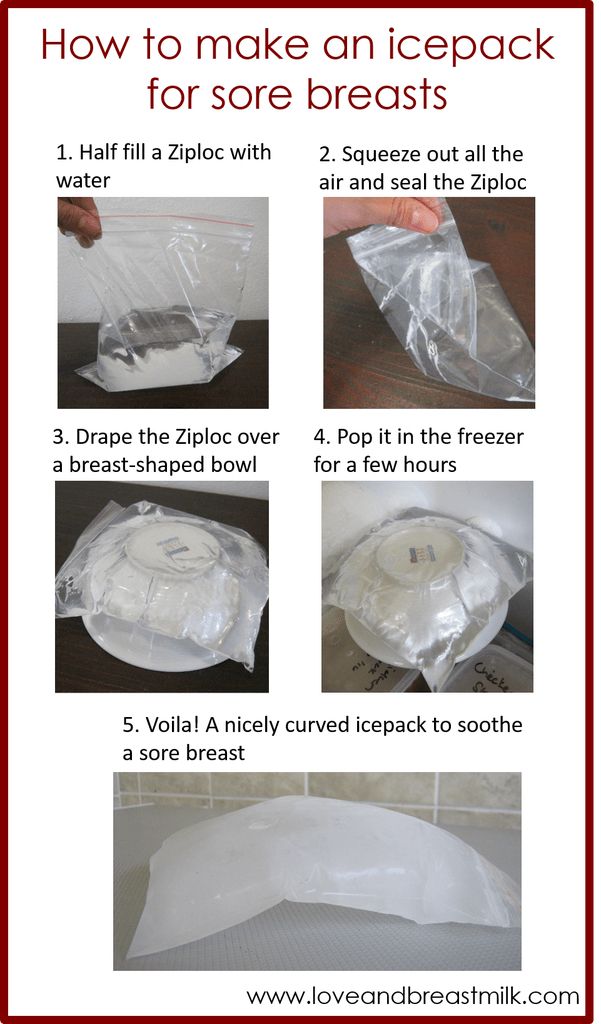 The height should be convenient for filling the feeder, and the food should be accessible to the birds. nine0003
The height should be convenient for filling the feeder, and the food should be accessible to the birds. nine0003
Another version of the feeder is mesh. The design allows you to lay a large supply of food at once, and the net allows you to feed even when the lower part is covered with snow. There is a large hole at the bottom of the feeder, in the photo it is covered with snow, but birds can peck seeds through the cells. Photo: Forest Simon, Unspash
What materials should I use to make my feeder?
Plastic Acrylic and polypropylene are resistant to temperature changes and are easy to clean. Acrylic also has high transparency - a great option for those who like to photograph birds and watch them. nine0017 Metal If you choose a metal feeder, only a metal mesh will do - if a large area of \u200b\u200bthe feeder is made of this material, birds can freeze to it with their paws. Wood Wood is a classic and suitable material for making a feeder. Before hanging, the house should be covered with an antiseptic or varnish in order to protect it from weather conditions and mold, but you should pay attention to the composition - the coating must be safe for birds. For example, used oil is not suitable for lining the feeder. nine0003
Before hanging, the house should be covered with an antiseptic or varnish in order to protect it from weather conditions and mold, but you should pay attention to the composition - the coating must be safe for birds. For example, used oil is not suitable for lining the feeder. nine0003
Tap-dancing birds are small forest birds that enjoy eating sunflower seeds. Males have a red spot on their heads. Photo: Anna Lukyanchikova
What to feed the birds?
In winter, birds need high-calorie food. raw unsalted seeds and nuts should be the basis for filling the feeder. Tits, nuthatches and bullfinches will appreciate butter and lard (the main thing is not salty). And woodpeckers and jays will rejoice acorns . You can add fresh and dried fruits, berries, and whole grains such as millet or corn . In small quantities, dried white bread is also suitable, but plant foods are still better. The more different foods you put in the feeder, the greater the species diversity of feathered guests will be.
The more different foods you put in the feeder, the greater the species diversity of feathered guests will be.
On the video you can watch different birds and listen again to the basic rules of winter feeding
Interestingly, many ornithologists and birdwatchers argue about whether it is possible to put shelled sunflower and millet seeds in the feeder. The thing is that these products quickly oxidize and deteriorate. Therefore, if it is not possible to put something else in the feeder, add peeled seeds and millet in small quantities, and if they lie for a long time, clean the feeder from these products. nine0073
Two in one: a solid wooden feeder next to a bird biscuit on which a nuthatch sits. Photo: Fabianna Freeman, Unsplash
How to make a feeder with your child?
Making and caring for a feeder is a great opportunity to introduce your child to different types of birds and instill a love of nature.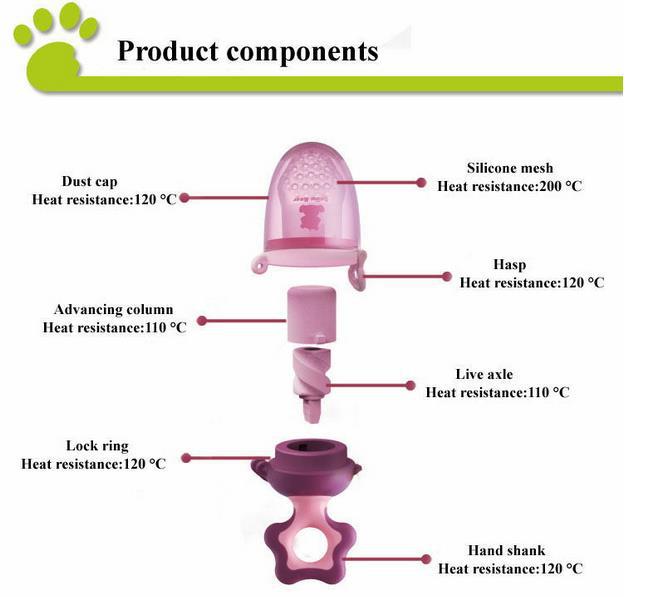 Make a bird feeder together and take care of it during your daily walks. Below you will find some interesting 9 feeder options0018, which are suitable if there are no boards or plastic bottles at hand. Edible feeder The simplest version of the feeder, which does not need to be washed and cleaned. Mix seeds, pieces of dried fruit with melted lard or fat, pour into a silicone mold and put a string in it. Place the food in the freezer to chill. Make bird cakes regularly and hang them in the same place. Remove the empty ropes and, if possible, reuse them (after all, if you leave the rope on a live tree branch, over time it can pinch the branch, and it will dry out). nine0017 Purchased feeder If you do not have leftover building materials or the opportunity to make a feeder with your own hands, you can purchase a ready-made version. Usually such feeders are made of plywood - with a child, you can paint it in any colors and give an individual style to your own bird cafe.
Make a bird feeder together and take care of it during your daily walks. Below you will find some interesting 9 feeder options0018, which are suitable if there are no boards or plastic bottles at hand. Edible feeder The simplest version of the feeder, which does not need to be washed and cleaned. Mix seeds, pieces of dried fruit with melted lard or fat, pour into a silicone mold and put a string in it. Place the food in the freezer to chill. Make bird cakes regularly and hang them in the same place. Remove the empty ropes and, if possible, reuse them (after all, if you leave the rope on a live tree branch, over time it can pinch the branch, and it will dry out). nine0017 Purchased feeder If you do not have leftover building materials or the opportunity to make a feeder with your own hands, you can purchase a ready-made version. Usually such feeders are made of plywood - with a child, you can paint it in any colors and give an individual style to your own bird cafe.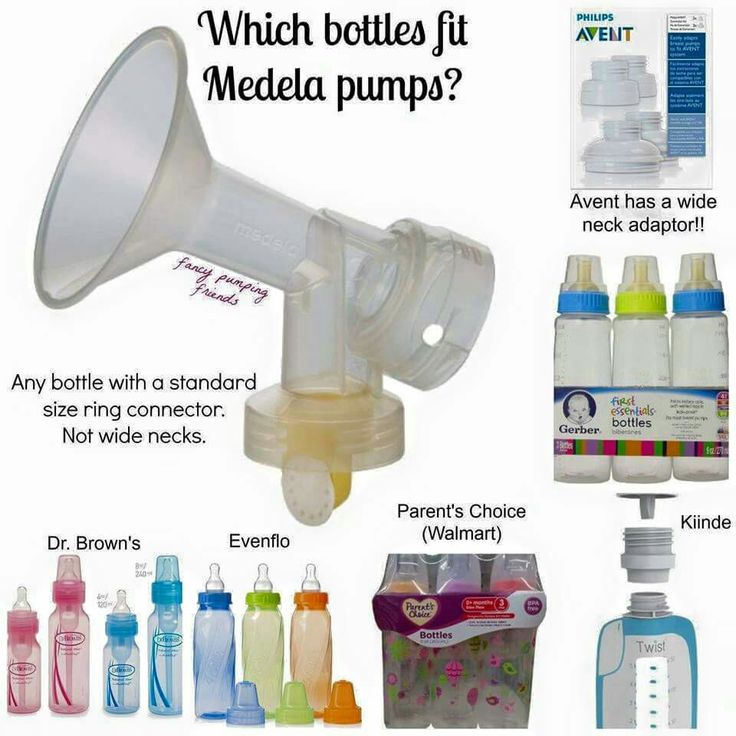
Buying a ready-made feeder is not difficult - usually such designs last one season, but they will help many birds survive until spring. Even a large spotted woodpecker visits such a bird's canteen. Photo: Anna Lukyanchikova
Vine feeder A feeder woven from a vine or made from a small old basket will look very unusual - you just need to add a roof or turn the basket sideways, removing the bottom.
Learn more about the world of birds
Now you know how to help birds in winter. Involve children, younger siblings, schoolchildren and kindergarten students in the creation of bird feeders so that the chain of good attitude towards birds does not break. And to learn more about birds, check out 5 amazing bird documentaries. If you feed birds, you can take part in the all-Russian flash mob "Bird Keepers". Share your kindness and inspire others to help the birds! nine0003
Cover photo: Anna Lukyanchikova
Bird feeder as a way to develop attention in children
At all times in the upbringing of children, instilling care, love, and attention to birds and various animals has played a very important role in the upbringing of children. Parents should gradually introduce the baby to the world of birds, explaining to the baby the role of man in the world around him, nature. It is for such cases that do-it-yourself construction for birds of comfortable, beautiful, practical feeders is perfect. nine0003
Parents should gradually introduce the baby to the world of birds, explaining to the baby the role of man in the world around him, nature. It is for such cases that do-it-yourself construction for birds of comfortable, beautiful, practical feeders is perfect. nine0003
Caring for cute birds will bring real joy to the baby, while he will begin to understand that everyone who needs it needs help, including feathered representatives of nature. In fact, this is the first step in comprehending such an important feeling as mercy, attention to others.
Knowledge never hurts
It is necessary to explain to the child in an accessible form that any actions of a person can influence the world around them. And these actions do not always have a positive effect on nature. The kid must understand that you should take care of the world around you and its inhabitants. It is better to leave specific facts out of the brackets, including the mortality of titmouse during the period of severe cold, so as not to upset and even frighten the young naturalist. nine0003
nine0003
In the process of making a feeder, a parent will have to touch not only the direct construction, but also issues of science and natural history. The child will certainly become interested, and for which birds there will be a feeder. Here, dad or mom will have to remember the school curriculum and tell that about seven dozen different birds remain in Russia for the winter in cities and adjacent areas, including titmouse, blue tit, Muscovy, Gadgets, woodpeckers, bullfinches.
It will be unobtrusive, but very interesting for a child to learn that it is birds that bring great benefits to people and all nature, because they eat harmful caterpillars and bugs. In winter, such “harmful” food tries to hide, for example, under the bark of trees, so many birds cannot get them out of there. And the plant seeds are already covered with a thick layer of snow, which can only be reached after the snow and ice melt. nine0003
Understanding the complexity of feeding birds in the winter, a person must help the little birds, which is what you need to tell the baby. Believe that each new fact will be very interesting for him, because the parents tell everything with paternal love.
Believe that each new fact will be very interesting for him, because the parents tell everything with paternal love.
And don't forget about the fact that when making a feeding trough, always busy parents will spend several hours with their child and give him such necessary attention. Just imagine how children's eyes will glow with happiness, seeing their beloved father and mother next to them, trying to help the young naturalist. nine0122
Types of bird feeders
Of course, you can go to the nearest market or shop and buy a ready-made bird feeder, but it’s more correct and better, from the point of view of competent upbringing of a child, to make it yourself using improvised means, simple materials and devices .
"Classic"
The classic model of the feeder looks like an open gazebo, in which there is a reliable roof and a solid floor. It is on the “floor” that dad and son will put tasty and healthy food, food for birds. To prevent the wind from blowing the food off the floor, it is necessary to make sides of a small height on the sides of the floor.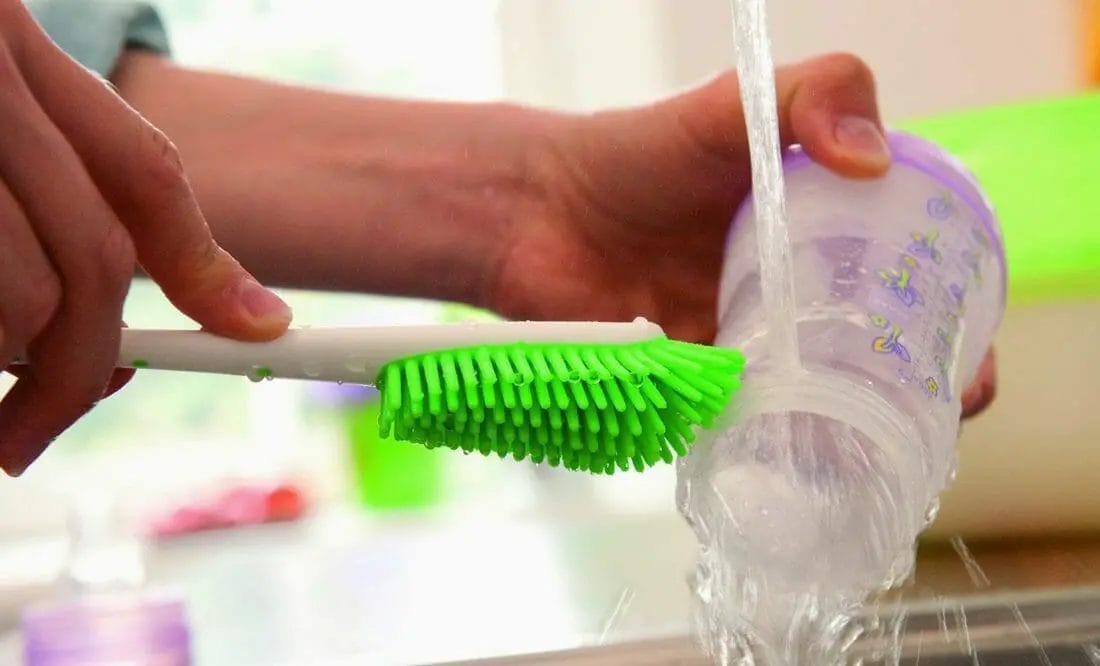 From snow and rain, the food will be reliably protected by the roof. Another important point is the organization of drainage holes in the floor through which water falling from the sides escapes. If the water is not taken away in time, then the food will soon become moldy and cease to be useful for the birds. When making such a feeder, it is worth considering that the edges and walls should not have sharp edges so that the birds do not damage their wings. At each stage of creating this design, it is worth explaining to the child the usefulness and importance of each action, thereby the child will also begin to comprehend the initial building skills. nine0003
From snow and rain, the food will be reliably protected by the roof. Another important point is the organization of drainage holes in the floor through which water falling from the sides escapes. If the water is not taken away in time, then the food will soon become moldy and cease to be useful for the birds. When making such a feeder, it is worth considering that the edges and walls should not have sharp edges so that the birds do not damage their wings. At each stage of creating this design, it is worth explaining to the child the usefulness and importance of each action, thereby the child will also begin to comprehend the initial building skills. nine0003
"Neoclassic"
For the first version of the feeder, you need to have wooden planks, sticks, a few nails, which is not always at hand. In this case, you can make a less troublesome, but no less effective "canteen" for the birds. Take a juice bag, milk bag, or a 5 liter drinking water bottle. Carefully cut holes on both sides, remembering to leave a small shoulder at the bottom. In the upper part, thread a piece of wire or a thick rope, with which the entire structure will be suspended from a tree knot. In the manufacture of this type of feeder, the child is again taught, because it is worth telling him about caution when handling sharp cutting objects (knives). Another small step in the child's understanding of the world around him. nine0003
In the upper part, thread a piece of wire or a thick rope, with which the entire structure will be suspended from a tree knot. In the manufacture of this type of feeder, the child is again taught, because it is worth telling him about caution when handling sharp cutting objects (knives). Another small step in the child's understanding of the world around him. nine0003
Wall-mounted "cage" for grain mixture
For a simple but reliable design, you will have to find some coarse mesh in the garage or storage room. Turning on the inner sense of a sense of space, you need to make a small box. Don't worry if its shape and dimensions look a bit ridiculous. The main thing is the cause for which it was created.
Inside the mesh space box, you can put the grain mass prepared in advance from coconut oil, vegetable oil and 300 gr. grain mixtures. The oil is heated, grains are added. The whole mixture is poured into small molds, and after solidification, it is laid out in feeders. nine0003
nine0003
Pumpkin arbor
Probably, many parents have a dacha or a couple of beds in the village, where a lot of vegetables and fruits have grown over the summer. A small pumpkin is perfect for making a feeder. It is enough to cut a through hole in the body of the pumpkin, which should subsequently be cleaned of seeds. With the help of a piece of wire or rope, the pumpkin is hung by the tail on the nearest tree. At the bottom of the new "dining room" feed is poured out. Simple, but very beautiful and comfortable feeder. Here you can also tell your child about vegetables and their benefits. It would seem that a simple pumpkin, but how many benefits can a person get when eating it. In a simple and unpretentious way, tell your child some fairy tale related to this unique vegetable. nine0003
A tin can to help you
A very tempting solution for birds is a bright tin painted in various colors. It is enough just to cut off the bottom of the jar from any end and process the edges to remove sharp edges. Sprinkle food inside such a feeder. Due to the presence of one end "wall", the food will not fly out during gusts of wind.
Sprinkle food inside such a feeder. Due to the presence of one end "wall", the food will not fly out during gusts of wind.
Use a bright satin ribbon to hang the jar from a branch of a tree. Due to the beautiful bright color, such a feeder will not only be a wonderful gift for the feathered "brothers", but also an unusual decor element of any garden or yard. nine0003
Wicker twig feeder
This type of feeder is considered quite difficult to manufacture, because you have to watch several videos about construction technology. The main thing is to find long rods of the vine, without growths and knots. A little patience and perseverance from the parents and the child and the feeder will be ready. Thus, the child can develop perseverance, which will be very good during the lessons at school.
A little about bird food
Ornithologists say that each bird has its own food preferences. So titmouses prefer cheese and a piece of salted bacon, dried meat. For such treats, you can whip up a mini feeder.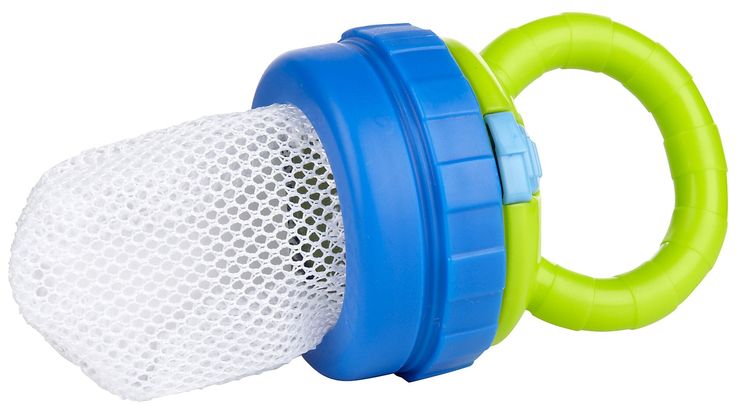 A piece of meat is strung on the tip of the wire and immediately hung on a tree knot. With its small but strong paws, the bird will confidently hold on to a piece of meat, eating it appetizingly. At the same time, even gusts of wind will not be afraid of such a "dining room", swaying measuredly with a bird. nine0003
A piece of meat is strung on the tip of the wire and immediately hung on a tree knot. With its small but strong paws, the bird will confidently hold on to a piece of meat, eating it appetizingly. At the same time, even gusts of wind will not be afraid of such a "dining room", swaying measuredly with a bird. nine0003
Next on the list of bird food are sunflower seeds (raw, roasted, dried). Clever birds with husks do not swallow seeds, but very scrupulously peck out the kernels. In addition to sunflower, you can pour seeds of melon, pumpkin, millet, millet. Just keep in mind that any food must be necessarily unspoiled, fresh.
Benefits for children
Each of the feeders discussed above can be considered not only a real masterpiece of joint building art, but also a real storehouse of knowledge, which is told to the child by his parents. Describing each stage, talking with the child, carefully listening to their child, parents teach not only the baby, but they themselves comprehend the difficult, but such a pleasant lesson in communicating with their son or daughter.

